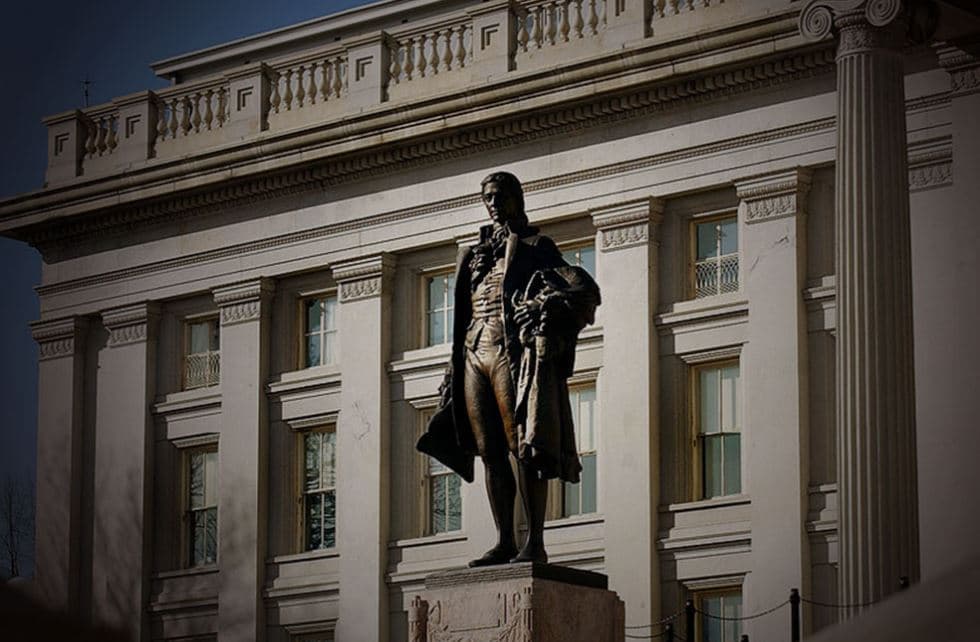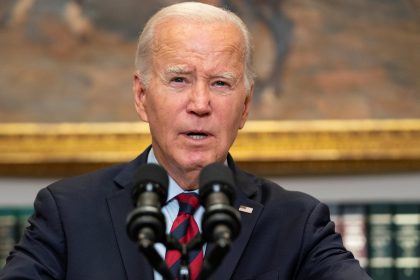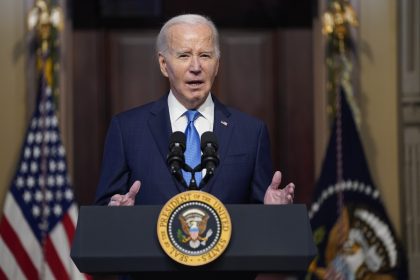Federal Deficit Projected to Exceed $1 Trillion By Late September

The federal budget deficit for the fiscal year to date is $691 billion and will exceed $1 trillion by the time the current budget year ends in September, the Treasury Department said Wednesday.
In its monthly report on the government’s finances, the department said the deficit for March was $146.9 billion, which caused the annual debt to rise 15 percent for the first half of the budget year, compared to the same period in 2018.
Much of the blame for the rise in the deficit can be attributed to the Republican tax cut bill signed into law by President Donald Trump in December 2017.
Although tax receipts ran slightly higher than a year ago, the $10 billion bump came nowhere near keeping pace with the nearly $100 billion increase in government expenditures that has occurred this year.
Representative Ben McAdams, D-Utah, who on Tuesday introduced a Balanced Budget Amendment for consideration in the House, expressed great concern over Wednesday’s Treasury report.
“The President’s fiscal year 2020 budget would add more than $10 trillion to the debt, when accounting gimmicks are removed, according to nonpartisan budget experts,” said McAdams, who is co-chair of the House Blue Dog Coalition Task Force on Fiscal Responsibility and Government Reform.
“Democrats and Republicans continue to vote for policies that increase our future debt burden, with no offsets. This is a bipartisan problem in both the legislative and executive branches, and it must end,” McAdams said.
The congressman’s Balanced Budget legislation is cosponsored by 11 other members of the coalition of fiscally-responsible Democrats.
Senator Mike Enzi, R-Wyo, chairman of the Senate Budget Committee, recently expressed concerns similar to those of McAdams.
“By constantly ignoring the increasingly dire fiscal straights that our country is in, hard decisions today will be made even tougher tomorrow,” Enzi said. “It is time to chart a more sustainable fiscal path to strengthen America’s future.”
The Treasury Department’s deficit forecast for the end of the fiscal year was decidedly grimmer than the already pessimistic view held by the Congressional Budget Office.
In projections released on January 28, the budget office said it expected the government to spend about $4.4 trillion this year, and to take in about $3.5 trillion.
The CBO expected the 2019 fiscal year to close with a deficit of $897 billion and suggested the deficit would likely stay below $1 trillion until at least 2022.
The budget office went on to say that over the next decade, deficits would likely fluctuate between 4.1 percent and 4.7 percent of the value of the nation’s gross domestic product, well above the average over the past 50 years.
In a statement to Congress when the CBO’s numbers were released, the office’s director, Keith Hall, said the nation’s debt could equal 93 percent of its gross domestic product by 2029, and about 150 percent of GDP by 2049.
“Even at its highest point ever, just after World War II, debt was far less than that: 106 percent of GDP,” Hall said.
If those predictions came to pass, Hall said, the consequences would be catastrophic.
“First, as interest rates continued to rise toward levels more typical than today’s, federal spending on interest payments would increase—surpassing the entire amount of defense spending by 2025,” he said.
“Second, because federal borrowing reduces national saving over time, the nation’s capital stock ultimately would be smaller, and productivity and total wages would be lower, than would be the case if debt was smaller,” Hall continued.
In addition, lawmakers would have less flexibility than otherwise to use tax and spending policies to respond to unexpected challenges, and finally, the likelihood of a fiscal crisis in the United States would increase, Hall said.
























